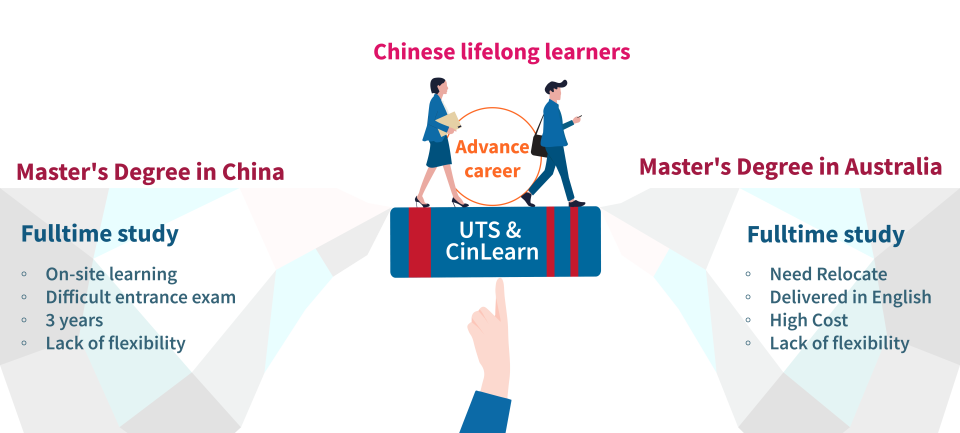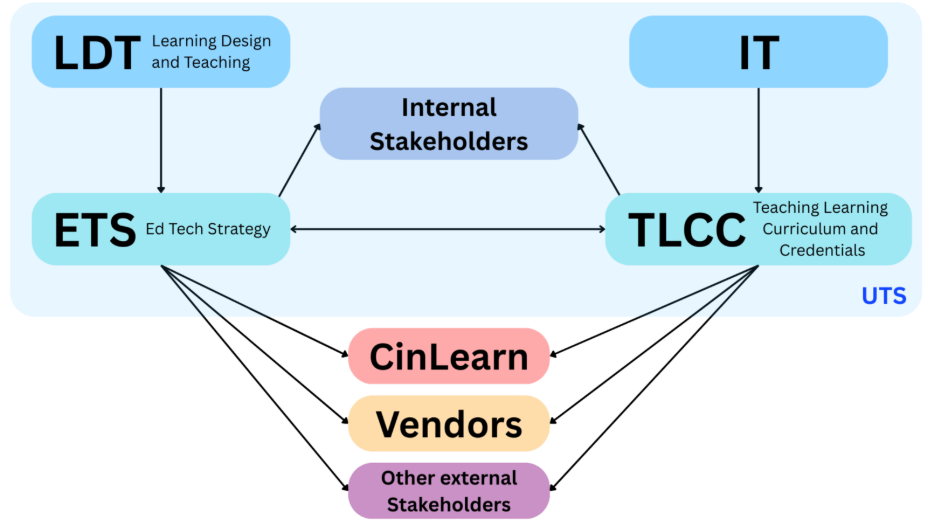In an increasingly globalised education landscape, universities are rethinking how they deliver learning to meet the needs of diverse students. At UTS, we’ve taken a bold step in this direction through expanding UTSOnline to Chinese speakers – a strategic initiative to deliver postgraduate courses online in Simplified Chinese, tailored for learners based in Greater China and the Chinese diaspora across the globe.
This blog explores how we localised the Canvas LMS ecosystem to support cross-border delivery, the challenges we faced, and the lessons we learned along the way.
Why China, and why Postgraduate?
China represents a significant opportunity for Australian higher education. Around 30% of international students in Australian higher education come from China (Department of Education, 2025). But there are more opportunities beyond that. Not all learners can relocate to Australia. Many are working professionals with family responsibilities, limited English proficiency, or financial constraints – especially given the rising cost of living in Australia.

These are lifelong learners seeking flexible, high-quality international education that fits their lives. The UTS and CinLearn partnership bridges this gap by offering:
- Fully online postgraduate courses
- Delivered in Chinese by bilingual instructors, with additional support from bilingual student success coaches
- Hosted on Canvas LMS – same as any other UTS courses, and integrated with tools optimised for Chinese learners
- Supported by a culturally and linguistically localised student experience
Collaboration at the core

The success of this initiative hinged on deep collaboration across UTS and with external partners. Internally, our Education Technology Strategy (ETS) team focused on planning, testing, and implementing technologies within the Digital Learning Ecosystem. To localise the full technology stack, we worked closely with the Teaching, Learning, Curriculum and Credentials (TLCC) team. Our two teams use the weekly Release Management (RM) meetings to track progress, prioritise work, and resolve blockers. This rhythm of collaboration enabled us to respond quickly to challenges and deliver a seamless experience for learners.
We also engaged a wide range of internal stakeholders across learning design, international partnerships, product strategy, governance, legal compliance and more. Each played a vital role in shaping the project. Externally, we partnered with CinLearn Education, who provided student support and valuable insights into the Chinese market. They also offered a testing environment within China to validate our solutions.
For every technology involved, we engaged vendors such as Canvas, Kaltura, Atomic Jolt, EzExtend, and others to ensure tool compatibility and localisation.
Localisation: more than translation
One of the key insights from this project is that localisation goes far beyond translation. While translating content into Chinese was essential, we also needed to adapt pedagogy, technology, and support systems to suit the cultural and regulatory context of our learners.
Here are a few examples of how we approached this:
- Canvas LMS provided a professional Chinese language pack, which we enabled at the course level. This allowed us to deliver Chinese subjects within the same Canvas instance used for other subjects, without disrupting the broader ecosystem.
- Atomic Jolt had a Chinese language pack, but it was machine translation that didn’t meet our standards for fluency and readability. We worked directly with the vendor and provided better translation solution, ensuring the interface was authentic, fluent, and easy to understand.
- EZExtend, our automatic assignment extension tool, initially lacked Chinese language support. After liaising with the vendor, they were very helpful and developed a Chinese language pack specifically for this project.
- Google services, including Colab and YouTube, are blocked in China and therefore unusable. In collaboration with learning designers and teaching staff, we replaced Colab with Anaconda, a locally installed coding environment, and substituted YouTube videos with text-based alternatives or Chinese-hosted content.
We also worked with TLCC to configure custom LTI launch parameters and adjusted SSO and identity controls to support seamless navigation and access for CinLearn staff – who do not hold UTS accounts.
Lessons learned
Here are some of the key takeaways from our journey:
- Partnership is critical: success required close collaboration between internal teams, international partner, vendors, and other external stakeholders.
- Localisation is holistic: it involves language, culture, pedagogy, and technology.
- Flexibility matters: tools must be adaptable to regional restrictions and user needs.
What’s next?
We’ve successfully delivered the first subject and are now gathering student and academic feedback to refine future offerings. Our goal is to continuously improve the experience, resolve remaining localisation issues, and expand our reach in China and beyond.
This project demonstrates how technology and local partnerships can break traditional barriers to higher education. It’s a model that other institutions can replicate to serve learners in non-English speaking markets, without compromising quality or accessibility.
